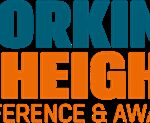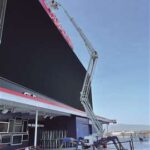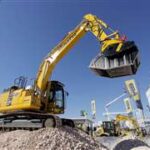Aerial Lift Hazards: What to Watch Out For
Aerial lifts can be dangerous if not properly used, and OSHA identifies several key hazards, including electrocutions, falls, tip-overs, collisions with objects, ejections from platforms, and entanglements. These risks can lead to accidents, injuries, and even fatalities. However, with proper OSHA-approved aerial lift certification training, workers can minimize the chances of these hazards becoming serious issues.
Common Aerial Lift Hazards
Aerial lift-related accidents are unfortunately frequent, with OSHA estimating that between 300 and 400 workers are injured each year while using such equipment. The dangers are particularly severe in cases involving Mobile Elevating Work Platforms (MEWPs), Aerial Work Platforms (AWPs), and scissor lifts. Workers using these tools face fatal accidents on average 20 to 25 times annually.
Some common hazards include:
- Falls from height due to lack of proper harnessing or if the lift tips over.
- Being struck by the lift if the operator loses control or if there is a collision.
- Electrocution from contact with overhead power lines.
- Entanglement when the platform or equipment gets caught between objects.
Here are seven primary hazards, along with strategies to avoid them:
1. Electrocution Risks
Electrocution remains one of the leading causes of fatalities involving aerial lifts, with nearly 50% of all fatal accidents attributed to it in studies between 1992 and 1999. Operators working near power lines are especially vulnerable. OSHA recommends these safety measures:
- Wear fall protection and never tie off to non-designated structures.
- Keep lifts at least ten feet away from live power lines.
- De-energize power lines in the work zone before starting tasks and wear appropriate protective gear such as insulated clothing.
2. Falls from Heights
Falls are a significant hazard, especially when aerial lifts are not properly operated. OSHA mandates the use of fall protection gear such as harnesses and lanyards. Additional safety steps include:
- Closing all gates and openings on the platform.
- Ensuring workers stand firmly on the platform, not leaning on guardrails or using planks.
3. Tip-Overs and Collapses
Tip-overs can occur due to improperly handling the lift, exceeding load limits, or operating the lift on uneven terrain. Prevent tip-overs by:
- Never exceeding the weight capacity.
- Not driving with the platform raised.
- Avoiding sloped ground and harsh weather conditions.
4. Falling Objects
If lifts are used to carry oversized objects, there’s a risk of items falling onto workers below. Operators should avoid positioning the lift under objects and ensure that ground personnel stay clear when the lift is in use.
5. Ejections from the Lift Platform
Ejections are often caused by unstable lifts or when operators fail to secure the machine. To prevent this:
- Ensure outriggers are set on solid ground.
- Use wheel chocks on slopes and set up work zone warnings.
6. Entanglement
Operators may get entangled in ropes or wires while operating the lift. Stay vigilant to avoid this hazard by being mindful of all cords and ropes in use.
7. Contact with Objects
Operators working near ceilings, power lines, or other obstacles must be cautious. Avoid striking ceilings or power lines, which could result in electrocution or damage to equipment.
How to Guard Against Aerial Lift Hazards
To reduce the likelihood of accidents, operators should:
- Conduct thorough pre-operation inspections to verify that the lift controls and equipment are functioning correctly.
- Operate the lift with awareness, ensuring there is clear visibility and avoiding hazards such as obstacles or other workers.
- Always wear the correct Personal Protective Equipment (PPE), including harnesses and fall protection gear.
The Importance of Proper Training
Aerial lift operators without sufficient training are more likely to cause or experience accidents. OSHA requires that all operators undergo proper training to ensure safety and efficiency. Training not only ensures compliance with regulations but also helps operators manage difficult situations, avoiding dangerous situations that could lead to costly fines or fatal accidents.
Training programs, such as those offered by CertifyMeOnline.net, ensure that all workers are well-prepared to handle aerial lifts safely. With OSHA-compliant courses available, employers can ensure that their workforce meets safety standards while avoiding expensive fines and penalties.
In conclusion, proper training and safety measures can significantly reduce the hazards associated with aerial lifts, creating a safer work environment for everyone involved.




